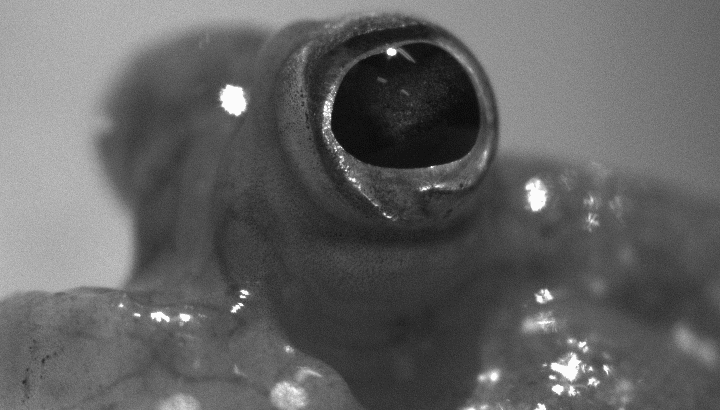Approximately 360 million years ago, tetrapods colonized the terrestrial environment. This water-to-land transition is marked by a suite of behavioral and morphological adaptations. Among these was the origin of blinking—the occlusion of the eye by one of more membranes. Blinking behaviors cover the cornea is a fluid film, which is important for epithelial cell health, and also clean the eye of debris. A second lineage of fishes, the mudskippers (Oxudercidae, Actinopterygii), have evolved to spend the majority of their day on land. These fishes have convergently evolved blinking behaviors. In this study, we ask why and how did blinking evolve in mudskippers. Mudskippers blink by lowering the eyes into a fleshy lower eyelid, which is known as the dermal cup. As the eye is lowered, the dermal cup is displaced laterally and dorsally to cover the cornea. We believe the movement of the dermal cup is important for the spreading of the tear film. To accomplish this behavior, the mudskippers rely only on their extraocular eye muscles, and have not evolved any apparent specialized anatomy. Further, histology of the eye apparatus reveal that mudskippers have not convergently evolved tear glands or novel secretory cells, suggesting that mudskippers rely on environmental moisture and mucus secretion for their tear film. Finally, using a home-made humidity chamber, we also discovered that blink rate is strongly influenced by the humidity of their environment, and these two variables have an inverse relationship. In summary, these data show how blinking, a complex behavior, can occur in systems that are unexpectedly rudimentary (i.e., without new associated musculature or glands). Blinking functions in both mudskippers and tetrapods to wet the eye, and this is mediated by mechanosensation of the cornea. Future work will analyze whether blinking in mudskippers cleans the cornea and how the origin of a novel reflex system originates.
